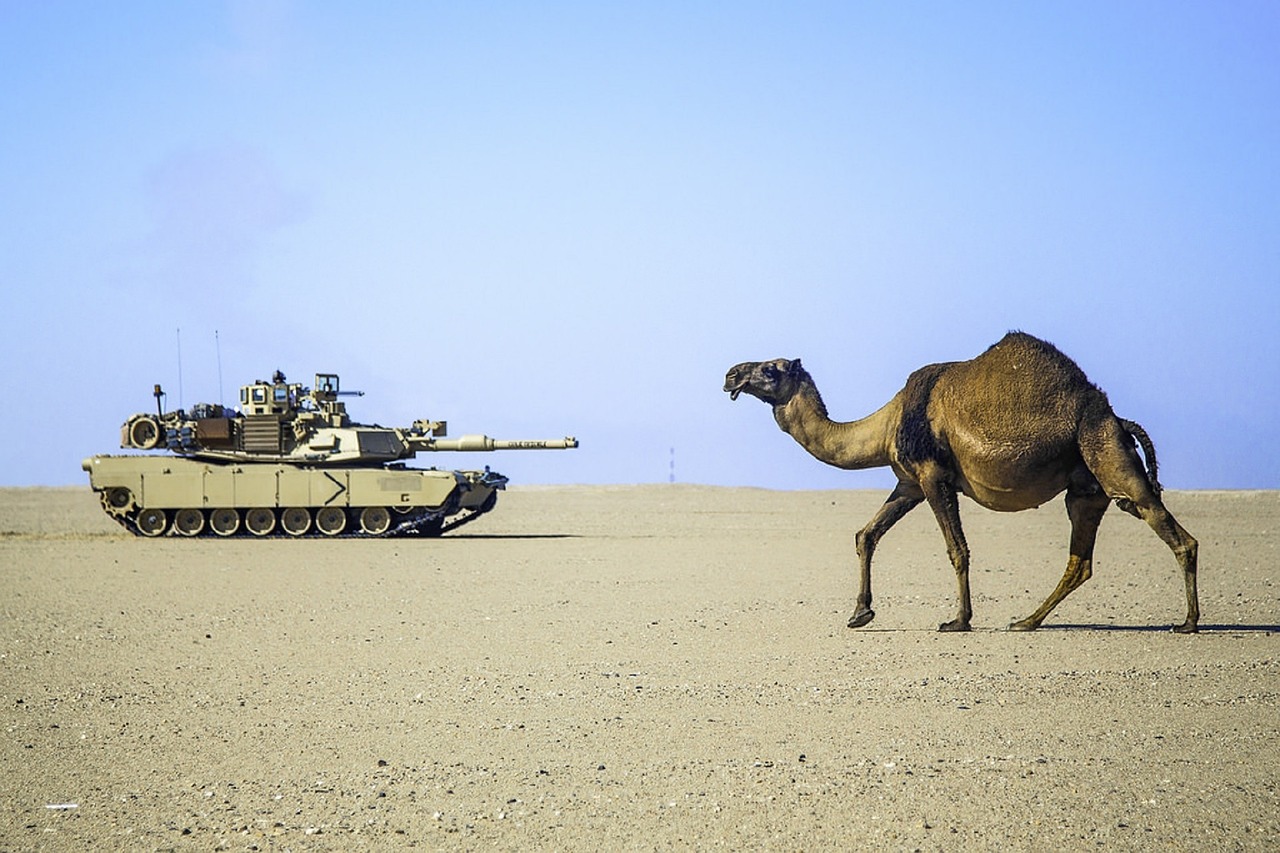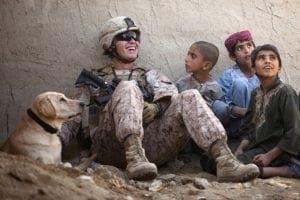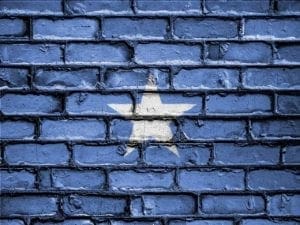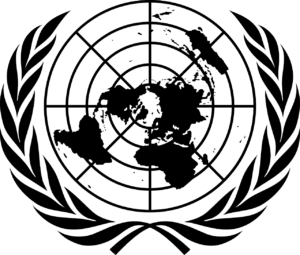By Fatih Celenay, Brandon Rapoza, Ratna Gamage
The purpose of this paper is to design a toolkit to decrease the violence and terrorism in Somalia. What are the practical solutions to increase the efficiency of military campaigns against Al Shabaab?
We will conduct our research by comparing the two counter-terrorism (C/T) strategies used against Al Shabaab and ISIS. Because both terrorist networks hold territory and act like states, they have similarities in many aspects. Today, ISIS has lost almost all of its territory, which shows that the military precautions taken by the Iraqi Government and the international community have been productive. Similar tactics can be used to minimize Al Shabaab threat.
Terrorism poses a serious threat for many countries in Africa. Violent militant groups like Al Shabaab, Boko Haram, and ISIS are the sources of destabilisation in various parts of the continent. Considerable military efforts should be taken under consideration, not only by African governments, but also by the international community. After reviewing the literature about Somalia, we posit that there are five main key methods by which the Somali Central Government (SCG) and the international community can improve the efficiency of the military operations against Al Shabaab: build a strong cooperation between the SCG and the local governments, increase the number of countries contributing to African Union Mission to Somalia (AMISOM) and reinforce it, provide conventional and unconventional programs of military training to the Somali National Army (SNA), support the SNA and AMISOM operations with a formidable air power, and make a financial investment in Somalia for the capacity-building of SNA.
Additionally, after doing a literature review about ISIS and the Iraqi Government, we concluded that strategies similar to our five methods were implemented in the fight against ISIS after 2014 and worked well. Because both terrorist organisations share some similar aspects, it is very likely that the five tools we designed will be quite effective. It is apparent that the Iraqi Central Government and the international community followed a similar path during military operations since 2014. ISIS and Al-Shabaab both controlled a significant amount of territory, used both conventional and unconventional strategies, and are also jihadist organisations focused on creating a caliphate, or Islamic state, for the earth’s Muslim adherents.
|
Al Shabaab |
ISIS |
|
| Holds territory |
+ |
+ |
| Acts like a state (tax collection, establishing courts etc.) |
+ |
+ |
| Uses terrorist tactics (Assassinations, suicide attacks, Improvised Explosive Device (IED) attacks, |
+ |
+ |
| Religion-based (Rigid interpretation of Sharia law) |
+ |
+ |
| Using media and internet, targeting journalists |
+ |
+ |
Chart 1: The similarities between Al Shabaab and ISIS[1],[2]
Before discussing Somalia and Al Shabaab, we will briefly explain the current politics and counter-terrorism operations in Iraq. The prime minister of Iraq, Haider Al Abadi, has adopted an inclusive approach to domestic politics since 2014.[3]
Not only does his government have strong ties with the US and its allies, but also its relationship with the local actors in Iraq is better than the Maliki Government’s relationship.[4] Peshmerga and Shia militia cooperated with the Iraqi central army and combined, defeated ISIS militarily and removed its physical presence from Iraq. Additionally, according to Emma Sky, a foreign affairs author, supporting the Iraqi Counter Terrorism Service has been one of the most significant successes of the US since 2003.[5] Helping the Iraqi Government build a counter-terrorism unit is an outstanding accomplishment and we argue that it can also be a model for other countries like Somalia. For example, US air support for the Iraqi security units provided a great advantage for the Iraqi troops during this process.[6] We would like to point out that what we are recommending for the security of Somalia is quite similar to the current steps taken by the Iraqi Central Government and the global actors in Iraq.
We’ll begin by discussing the implications of Somalia as a failed state before moving on to the historical background of Al-Shabaab.
As a part of that history we will compare the successes and failures of previous strategies and give recommendations for the future. Next, we will provide a plan by which greater cooperation can be attained between local tribal governments and the Somali central government. Simultaneously at the international policy level, we recommend that additional African Union (AU) countries join AMISOM in a troop surge so as to put greater pressure on Al-Shabaab.
Incapacitating Al Shabaab is of the utmost importance for not only the Somali Government, but also for the rest of the world. The violence, created by terrorism and insurgency, is widespread in Somalia and destabilising the entire Horn of Africa (HOA). The inability for the Somali government to maintain the monopoly on the use of force poses a great risk because it opens the door for terrorist organisation like Al Qaida and ISIS in addition to Al Shabaab. It is significant to prevent these dark networks from having breeding grounds inside this country for the success of not only the Somali C/T strategy, but also the US C/T policy against them. Otherwise, they can use the Somali territory as a safe haven to plan, organize and conduct their terrorist actions. It is urgent that an effective counter-terrorism strategy be created by the Somali Central Government (SCG), the United States, and its allies.
As a “collapsed state”, Somalia has been in conflict since the late 1970s[7] and is one of the poorest countries in the world.[8] The never-ending problems have led the Somali people to a state of poverty, chaos and bloody civil war. Finally, this vicious cycle gave birth to the rise of Al Shabaab. There are many reasons why Somalia has suffered such terrible events but the most important reasons, according to Afyare Elmi, a dual citizen of Somalia and Canada and political scientist, are: colonial legacy, state repression by the military regime, and competition for power and resources.[9] The future of Somalia still remains uncertain because the military operations conducted by AMISOM troops and the Somali National Army (SNA) have not forced Al Shabaab from ending its struggle against the SCG since 2007. Although the terrorist group has been pushed out of all major cities in Somalia and cut off from its financial lifelines, its operational capability is still high, according to the Global Terrorism Database statistics.[10],[11] The fact that its leaders have been decimated by drone attacks, internal strife, and defections surprisingly does not make Al Shabaab a highly-degraded organisation.[12] For example, according to Alexander Meleagrou-Hitchens, “when Ahmed Abdi Godane, who was the head of al Shabaab, was killed by an American drone attack in August 2014, Al Shabaab had an opportunity to change course, but his replacement, Ahmed Umar, quickly moved to reaffirm the alliance with al Qaeda and pledged loyalty to Zawahiri.”[13] Al Shabaab continued to conduct violent attacks although it lost its top leader.
It is a fact that Al Shabaab is not as strong and influential as it was six years ago and there is a significant amount of pressure on it due to the AMISOM’s operations and the international support behind the SCG. According to a report published by International Crisis Group, it is certain that the war against Al Shabaab will be a long one.[14] According to Bronwyn Bruton and Peter Pham, if a reconciliation cannot be reached, unfortunately, another decade of conflict and terror is likely to continue in Somalia.[15]
After reviewing the literature, it seems that political and economic tools are also required to solve the conflict in Somalia. Although our focus is on the military tools, for a comprehensive solution it is necessary to highlight the economic and political aspects in a later research. Somalia experts, Afyare Abdi Elmi and Abdi Aynte, have a similar argument and maintain that the AMISOM’s operations were productive, but other military activities performed by the Somali National Army and the international community were counter-productive.[16] This argument is partially true because the rivalries between the clans, the Ethiopia and Kenya interventions apart from AMISOM, caused a significant amount of backlash among the Somali people. Paul Hidalgo, also another prominent Somalia expert, highlights a different method and asserts that political leaders in Somalia should follow a three-steps strategy: eliminating terrorist leaders, depriving combatants of operational space and funds, and bringing disaffected individuals into the governmental fold.[17] It is apparent from all these different views that a consensus on the conflict solution in Somalia is a very difficult issue.
Al Shabaab lost its important leaders between 2007 and 2014, but this loss did not stop it from fighting with the Somali Central Government. It is clear that filling the leadership gaps is not difficult for the terrorist organization. Brett Butler, a US. Army officer, who wrote his master’s thesis about Al Shabaab in Naval Postgraduate School (NPS), posits that according to the critics, leadership decapitation strategies are not only ineffective, but also counterproductive.[18] This argument belongs to Jenna Jordan, who is a leading terrorism and counter-terrorism expert. Jordan maintains that leadership decapitations are most-likely ineffective, least-likely counter-productive.[19] This idea, with which we do not agree, has been countered with different arguments. It is true that decapitation strikes may not be effective enough to deter a terrorist organisation from launching violent attacks if they are conducted separately or individually. To this point, Patrick Johnston briefly states that decapitation can contribute substantially to a government’s overall success in its struggle against terrorist networks if it gets successful.[20]
Current policies under the UN resolution authorising the presence of AMISOM, restrict the number of troops in Somalia and are presently requiring the withdrawal of forces. The withdrawal comes amid a resurgence of Al-Shabaab attacks and a series of deadly bombings for which the group claims responsibility. 500 U.S. troops are currently stationed in Somalia and are engaged in counter-terrorism operations and ongoing training missions for the Somali National Army.[21] The withdrawal comes at a time when the U.S. is increasing counter-terrorism actions against Al-Shabaab and needs the continued support of AMISOM forces to maintain security operations. Marine Gen. Thomas Waldhauser reiterates the need for the continued presence of AMISOM forces, “From a security perspective, we view the presence of AMISOM as absolutely vital to maintaining security in Somalia until conditions allow for a gradual withdrawal”[22]. A complete withdrawal of all African Union (AU) forces is scheduled to be completed by 2020.[23] For the purposes of the policies for which we advocate in this document, it is undeniably necessary that U.S. forces have the continued support of AMISOM.
Initially, building a strong cooperation between Somalia Central Government (SCG) and the local governments is essential for the success of the military campaigns against Al Shabaab. The burden on the shoulders of the SCG is so heavy that it cannot continue the struggle against Al Shabaab on its own due to the diversity of those in the Somali National Army, and the many tribes represented therein. The reluctance and self-interests of the tribes can both undermine the military struggle and result in serious casualties. In addition, a high-level cooperation and coordination between the local governments and the central government is mandatory. For example, the gulf countries including the Kingdom of Saudi Arabia (KSA), UAE and Qatar have political agendas regarding Somalia.[24] It is beneficial for the SCG to have political relationships with each party. Because the KSA and UAE see Qatar as a rival state, they want the SCG to not have a relationship with Qatar and to pressure Somali President Farmajo not to cooperate with Qatar.[25] As a result of this dispute, KSA and UAE reduced the funds they send to Somalia.[26] Somaliland, a sub-state inside Somalia, had an opposite stance of the SCG and established close political ties with the KSA and UAE.[27] These kinds of disputes between central government and local governments appear as a sign of weakness and can therefore be exploited by Al Shabaab. The division might also weaken the military efforts to end Al Shabaab’s actions. To prevent the military efforts from getting weakened, the cooperation between the SCG and local governments should be increased. It is necessary to create a sense of shared identity between the tribes and the local governments and to refrain from partisan politics that favor one side over another.
Not only does the resolution regarding the gradual withdrawal of troops need to be delayed but also, additional states are needed to join AMISOM. Tanzania and Rwanda have vested interests in the stability of their surrounding neighbors and therefore should join AMISOM to prevent the spread of al-Shabaab into their countries.[28] In addition, Egypt is a member of the African Union and has a professional army making its contribution to AMISOM vital. A troop surge is needed to counter al-Shabaab before its presence and radical ideology spreads out of control in a region where individual countries do not have the institutional capacity to handle the threat alone.[29] Moreover, there is a lack of coordination between AMISOM and the SNA: neither force has the capacity to coordinate their activities efficiently with the other.[30] Additional troops from different countries means more need for coordination. To close this gap, a coordination unit (an HQ) should be established to enhance the success of military operations. A united effort in the Horn of Africa is necessary to counter al-Shabaab before it destabilises additional states.
Al-Shabaab has demonstrated a strategic efficiency that is a testament to their survival as an organisation. Throughout its history, the group has been able to seamlessly transition between battlefield tactics. Guerrilla, insurgent, and terrorism strategies have all been utilised by Al-Shabaab against the SNA, Kenyan forces during the Kenyan invasion of Somalia in 2011, and AMISOM over the past 10 years.[31] The group uses these strategies simultaneously, never shifting from one to the other, instead using all concurrently when they are necessary. Unconventional strategies have been the focus of the group due to the significant losses seen from the conventional strategies used during the “Ramadan Offensive” against AMISOM and Special Forces Group (SFG) troops in Mogadishu in 2010[16].[32] IED attacks against AMISOM, Kenyan, and SFG checkpoints, patrols, and convoys have become more frequent since 2012 and 2013. Additionally, Al-Shabaab continues to carry out cross border attacks against Kenya. Al-Shabaab wishes to pressure the Kenyan government to withdraw its troops from the country by inflicting large numbers of domestic casualties.[33] The sieges of Nairobi’s Westgate Mall in September 2013 and Garissa University College in April 2015 presented a message to the Kenyan government that they would continue to see high human and financial costs as long as Kenya soldiers occupied Somali lands.[34] The set of terrorist tactics used by Al Shabaab include suicide bombings, remote control devices, assassinations, IEDs, and intimidation strategies. The strategies used by the group are very similar to those of ISIS and the same strategies used to train opposition and Kurdish forces in Iraq and Syria can also be applied to AMISOM in Somalia.
AMISOM efforts have at best been stalled with the training of Somali national forces. Still torn by clan rivalries and shackled by a lack of military enablers, the 22,000 strong AMISOM power continues to be the principal counter insurgency force.[35] Counter-terrorism attacks by the US drone and special operations forces complicated al-Shabaab’s operations but did not alter the balance of power on the ground. In its ninth year now, having cost more than $1.1 billion, AMISOM continues to be barricaded in its bases and many of Somalia’s roads, even those areas that are supposedly cleared, are continually controlled by al-Shabaab.[36] US troops have been the primary providers of training and assistance to the local forces.
During the Obama administration, Africa Command could not execute self-defense tactics using the US forces in Somalia but President Trump’s decision in April of this year granted new authority to give the Africa Command commander the ability to carry out precision air strikes to support AMISOM and Somali troops to fight al-Shabaab.[37]
The October 16th 2017 Mogadishu bombing by Al Shabaab which killed more than 320 civilians, making it the Somali equivalent of 9/11.[38] Military grade explosives used in this bombing had been stolen from AMISOM and will likely be used again in the near future. Under these circumstances, the US plans to expand its unofficial war in Somalia and give American forces on the ground greater authority to request more fire power.[39] Recapturing the southern portion of the territory, considered to be the most active hostile part in Somalia, is imperative. Just as the Islamic State was destabilised in Iraq and Syria through effective air power in addition to howitzer and rocket artillery, the US relaxed their rule on the procedure for calling in air strikes, which will be the turning point.[40] As an expansion of these policies, the US has engaged in additional drone strikes in recent months. According to the Pentagon, there have been 29 strikes in 2017 with seven of those strikes taking place between 9th and 14th November 2017. The air strikes will be a key to the operational success against Al Shabaab in Somalia.
Ethiopia, with deeply-rooted animosity toward Somalia, is the third biggest contributor to the AMISOM. Kenya and Uganda are the main providers: Djibouti, Sierra Leon and Burundi have contributed to AMISOM. Kenya still supports their favorite Somali proxies and Kenyan Defense forces control the Kismayo Port leading to clashing interests with both the Somalia National Government and with Ethiopia.[41] Trump’s new initiative of the network of cooperative security locations across the continent under the umbrella of larger regional missions, Operation Octave Shield, is hopeful one and likely to be successful. The US assisted with giving $9 million in military equipment to Somali National Army, in effect entering a new chapter in east Africa.[42]
The last important tool for a robust military power is to focus on financial investment in Somalia.
It is a well-known fact that building a powerful military force requires strong financial resources. Therefore, without sufficient funding, any efforts to sustain the development of the Somali National Army will not be possible. Two different aspects have to be considered regarding financial solution: Somalia’s own economic development and donations made by international community. Initially, securing the urban areas and trade routes is extremely important. There is a strong correlation between financial investments and security concerns. No businessmen, including the ones inside the Somali Diaspora, will choose to establish businesses if they do not feel safe in Somalia. For further economic development, the current Somali Central Government and the Somali president should design a security strategy that will establish a safe environment for foreign investors. Apart from that, another important mission is to prevent extortion and money laundering, an action which allows more money to be collected as tax. Solving corruption and bringing transparency are the urgent matters as important as the financial investment issue. The new President, Farmajo, is known for his anti-corruption stance but his personal efforts will not be enough.[43] His government should also prove to the global community that any aide given by other countries will be used properly for the development of Somalia. Assuring the donors is crucial, otherwise they may not want to “waste” their money and make a donation for a second time. Establishing a strong army requires a strong economy: recruiting soldiers, having high-tech equipments, armoured vehicles, aviation units, aircrafts, battleships, all require a strong state budget. To design an effective counter-terrorism strategy, it is mandatory to have these advanced weapon systems in order to have superiority over Al Shabaab’s terrorist and guerrilla tactics. It is not a possible option to rely on other countries’ military units or weapon systems in the long term.
References:
[1] Craig Whiteside, “New Masters of Revolutionary Warfare: The Islamic State Movement (2002-2016),” Perspectives of Terrorism 10, no. 4 (August 2016): 15.
[2] Stig Jarle Hansen, Al-Shabaab in Somalia: The History and Ideology of a Militant Islamist Group, 2005-2012, 2014.
[3] Emma Sky, “Mission Still Not Accomplished in Iraq | Foreign Affairs,” Foreign Affairs Magazine, December 2017, https://www.foreignaffairs.com/articles/middle-east/2017-10-16/mission-still-not-accomplished-iraq.
[4] Sky.
[5] Sky.
[6] Sky.
[7] Robert Rotberg, “Failed States in a World of Terror | Foreign Affairs,” Foreign Affairs Magazine, August 2002, https://www.foreignaffairs.com/articles/2002-07-01/failed-states-world-terror
[8] Rotberg.
[9] Afyare Abdi Elmi, Understanding the Somalia Conflagration: Identity, Political Islam and Peacebuilding (London ; New York : Oxford : New York: Pluto Press ; Pambazuka Press ; Distributed in the United States of America exclusively by Palgrave Macmillan, 2010).
[10] “Global Terrorism Database,” Global Terrorism Database, accessed November 12, 2016, http://start.umd.edu/gtd/search/Results.aspx?page=1&search=al%20shabaab&charttype=line&chart=overtime&ob=GTDID&od=desc&expanded=yes#results-table
[11] Paul Hidalgo, “Kenya’s Own Worst Enemy | Foreign Affairs,” Foreign Affairs Magazine, April 12, 2015, https://www.foreignaffairs.com/articles/kenya/2015-04-12/kenyas-own-worst-enemy
[12] Hidalgo.
[13] Alexander Meleagrou-Hitchens, “Terrorist Tug-of-War: ISIS and Al Qaeda Struggle for Al Shabab’s Soul | Foreign Affairs,” Foreign Affairs Magazine, October 8, 2015, https://www.foreignaffairs.com/articles/kenya/2015-10-08/terrorist-tug-war
[14] International Crisis Group, “Somalia: Al-Shabaab – It Will Be a Long War | International Crisis Group,” International Crisis Group, June 26, 2014, https://www.crisisgroup.org/africa/horn-africa/somalia/somalia-al-shabaab-it-will-be-long-war
[15] Bronwyn E. Bruton and Peter Pham, “How to End the Stalemate in Somalia | Foreign Affairs,” Foreign Affairs Magazine, September 30, 2011, https://www.foreignaffairs.com/articles/africa/2011-09-30/how-end-stalemate-somalia
[16] Afyare Abdi Elmi and Aynte Abdi, “Negotiating an End to Somalia’s War with Al Shabaab | Foreign Affairs,” Foreign Affairs Magazine, February 7, 2012, https://www.foreignaffairs.com/articles/somalia/2012-02-07/negotiating-end-somalias-war-al-shabaab
[17] Paul Hidalgo, “Al Shabab’s Last Stand? | Foreign Affairs,” Foreign Affairs Magazine, September 14, 2014, https://www.foreignaffairs.com/articles/kenya/2014-09-11/al-shababs-last-stand
[18] Brett Butler, “Precipitating The Decline of Al Shabaab: A Case Study in Leadership Decapitation” (Naval Postgraduate School, 2015), http://calhoun.nps.edu/bitstream/handle/10945/47912/15Dec_Butler_Brett.pdf?sequence=1&isAllowed=y
[19] Jenna Jordan, “Attacking the Leader, Missing the Mark Why Terrorist Groups Survive Decapitation Strikes,” International Security 38, no. 4 (Spring 2014): 7–38, https://doi.org/10.1162/ISEC_a_00157
[20] Patrick Johnston, “Does Decapitation Work? Assessing the Effectiveness of Leadership Targeting in Counter-insurgency Campaigns,” International Security 36, no. 4 (Spring 2012): 47–79.
[21] Shawn Snow, “AMISOM Withdrawal Tests U.S. Mission in Somalia,” Military Times, November 9, 2017, https://www.militarytimes.com/flashpoints/2017/11/09/amisom-withdrawal-tests-us-mission-in-somalia/
[22] Snow.
[23] Snow.
[24] Rashid Abdi, “A Dangerous Gulf in the Horn: How the Inter-Arab Crisis Is Fuelling Regional Tensions | Crisis Group,” International Crisis Group, 2017, https://www.crisisgroup.org/middle-east-north-africa/gulf-and-arabian-peninsula/dangerous-gulf-horn-how-inter-arab-crisis-fuelling-regional-tensions
[25] Abdi.
[26] Abdi.
[27] Abdi.
[28] Tesfanews, “Associated Press. ‘African Union Needs Troop Surge in Somalia: AMISOM Chief.,’” March 12, 2017, https://www.tesfanews.net/african-union-needs-somalia-troop-surge-amisom-chief/
[29] Tesfanews.
[30] Bruton and Pham, “How to End the Stalemate in Somalia | Foreign Affairs.”
[31] Danial Branch, “Why Kenya Invaded Somalia | Foreign Affairs,” Foreign Affairs Magazine, November 15, 2011, https://www.foreignaffairs.com/articles/africa/2011-11-15/why-kenya-invaded-somalia
[32] Branch.
[33] Branch.
[34] Branch.
[35] Snow, “AMISOM Withdrawal Tests U.S. Mission in Somalia.”
[36] Snow.
[37] Spencer Ackerman, “US Drone Strike Kills Key Al-Shabaab Leader in Somalia | World News | The Guardian,” The Guardian, April 1, 2016, https://www.theguardian.com/world/2016/apr/01/us-military-somalia-airstrike-al-shabaab-terrorist-targets
[38] Ackerman.
[39] Joseph Trevithick, “America Is Expanding Its Secretive War in Somalia – The Drive,” The drive, March 17, 2017, http://www.thedrive.com/the-war-zone/8851/America-is-expanding-its-secretive-war-in-Somalia
[40] Barbara Starr and Ryan Browne, “US Airstrike in Somalia Kills More than 100 Al-Shabaab Militants – CNNPolitics,” CNN, November 21, 2017, http://www.cnn.com/2017/11/21/politics/somalia-us-airstrike-al-shabaab/index.html
[41] Trevithick, “America Is Expanding Its Secretive War in Somalia – The Drive.”
[42] Trevithick.
[43] Bruton and Pham, “How to End the Stalemate in Somalia | Foreign Affairs.”




